Flat Towing & Dinghy Towing Guide
Chapter 10
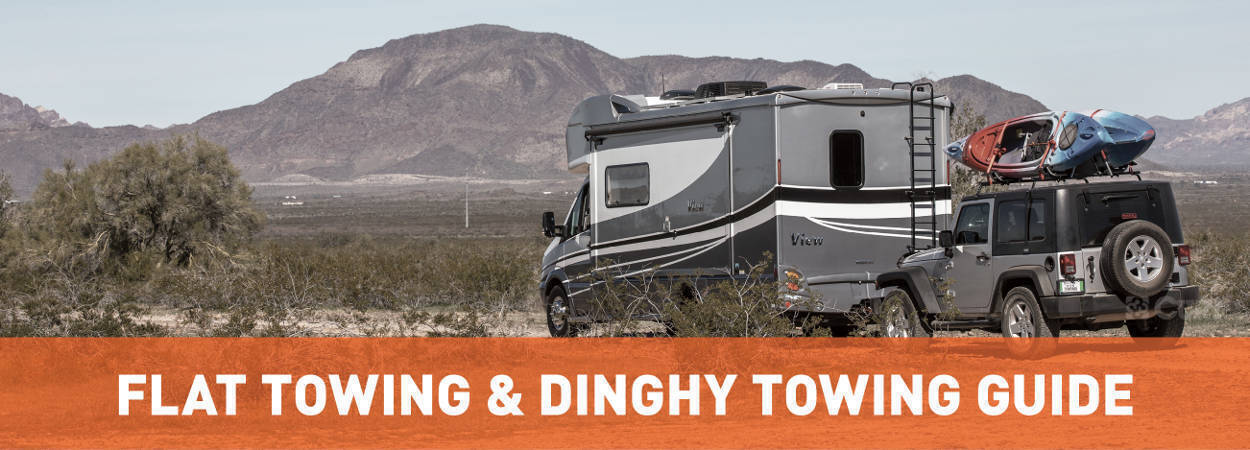

What Do I Need to Dinghy Tow?
Dinghy towing a car behind an RV is a great way to add more freedom to your adventures. But to dinghy tow successfully, you need the right equipment.
In this dinghy guide, we will cover the tools and equipment needed for dinghy towing. To tow a vehicle behind an RV, you will need:
- Tow bar (or tow dolly)
- Base plate
- RV hitch and drop / rise adapter
- Dinghy towing harness
- Brake system
- Tabs and safety cables
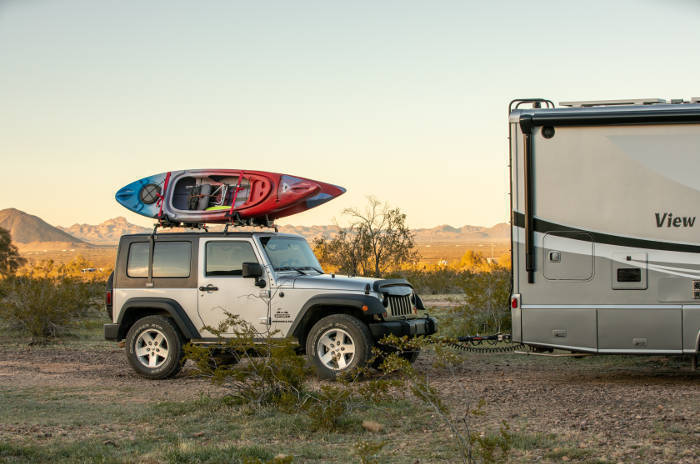

What is dinghy towing?
Dinghy towing is the act of towing a car behind a motorhome or RV. The car, called the dinghy, is connected to the RV with a hitch, wiring and other components. It is pulled by the RV as a trailer.
Other vehicles beyond just cars can also be dinghy towed, such as SUVs, pickup trucks and 4x4s.
There are a few different options for towing a car behind a motorhome.
Dinghy towing vs flat towing
Dinghy towing is the umbrella term for towing a vehicle behind an RV, while flat towing is more specific. The difference comes down to the motorhome towing equipment. Dinghy towing can be done using a tow bar or tow dolly.
When a tow bar is used, all four of the vehicle’s wheels are on the road. This is referred to as flat towing or four-down towing.
When a tow dolly is used, the vehicle’s front wheels are up off the road, resting on the tow dolly.
Flat towing with a tow bar is preferable for its ease of use and fewer equipment requirements.
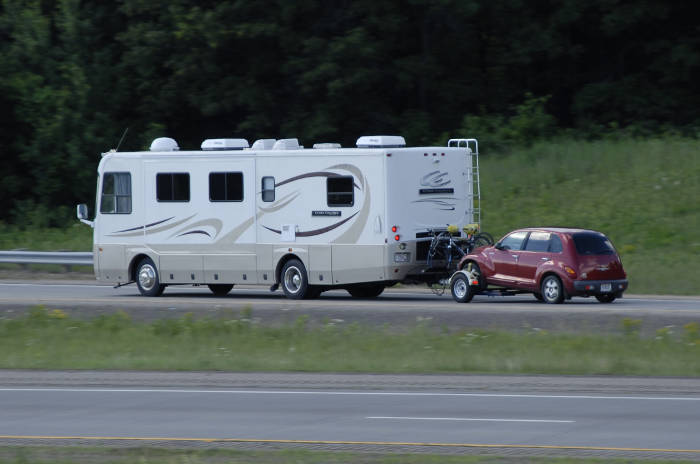

Equipment Needed for Flat Towing
Step 1: Choose a tow bar
Start with a tow bar. A tow bar will provide a secure connection between your dinghy vehicle and RV. It is comprised of two arms that attach to the dinghy and pivot side to side for smooth towing and turning.
Tow bars range in style, weight capacity and ease of use. Some tow bars hitch up to the RV using a standard receiver shank. Others use a coupler to drop onto a trailer ball.
A tow dolly can also be used for dinghy towing.
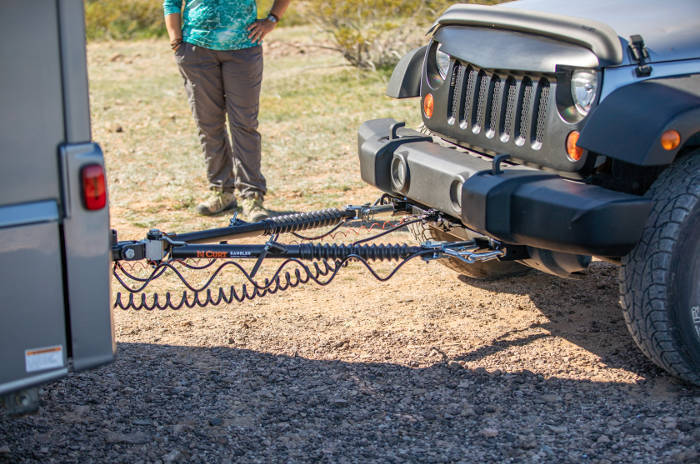

Step 2: Select a tow bar base plate
Choose a base plate that correspond to your specific tow bar and vehicle. Some tow bars attach to the vehicle with universal, bolt-on brackets, but the preferred method is a custom base plate.
A base plate is simply a metal frame that bolts onto the front end of your vehicle. It features two receivers to accept attachment tabs for hooking up the tow bar arms.
To select the right base plate, look up your vehicle by its year, make and model.
If you are towing with a tow dolly, a base plate will not be needed.
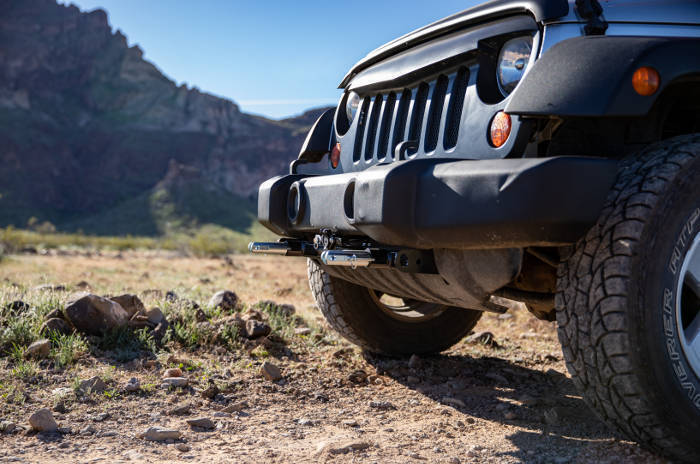

Step 3: Select an RV hitch & adapter
Before dinghy towing a vehicle behind an RV, you will need a receiver hitch on the back of your RV. Towing systems for motorhomes are very similar to car towing systems, using a rear-mounted receiver tube. RV hitches are available in a frame-mounted style or bumper-mounted style.
When flat towing a vehicle, the receiver hitch height must be within 3 inches of the tow bar base plate height. If the height difference is greater than 3 inches, a hitch adapter will be needed to drop to the correct height.
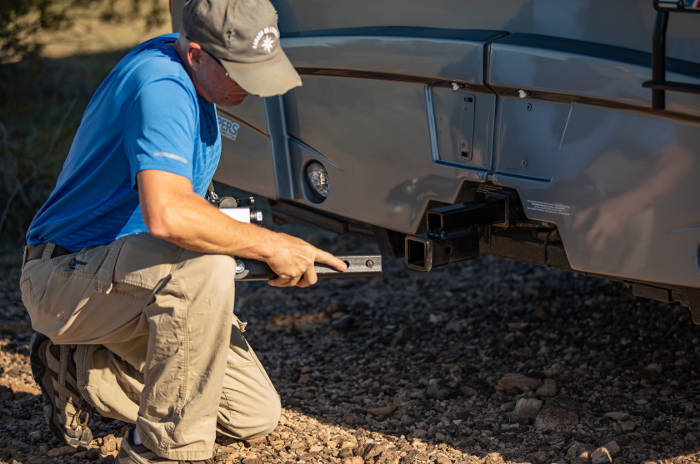

Step 4: Find a dinghy towing harness
To properly dinghy tow a vehicle, it needs to be connected to the RV, not just with a hitch connection but with an electrical connection as well. The towed vehicle lights must be synchronized with the RV lights for safe driving. This is done using a dinghy tow wiring harness.
CURT dinghy towing harnesses are made vehicle-specific for an easy, plug-and-play connection. They provide a standard 4-way flat to plug into the RV electrical socket.
Alternatively, magnetic RV towing lights can also be used.
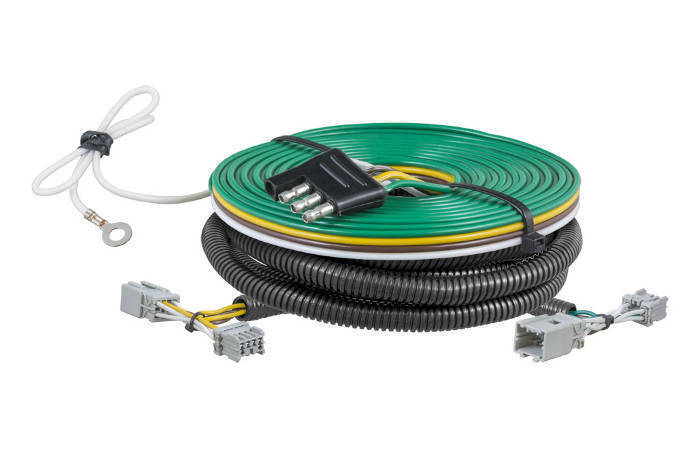

Step 5: Invest in a braking system
When flat towing a vehicle, an auxiliary braking system is recommended. Many tow dollies come with built-in brakes, but in flat towing, an on-board vehicle braking system should be used.
An RV’s brakes can be overloaded by the weight of the dinghy vehicle. Auxiliary brakes help the RV and vehicle stop smoothly and safely.
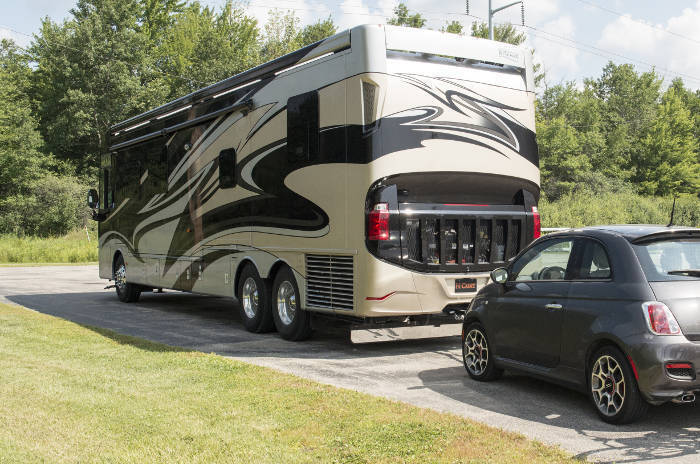

Step 6: Add tow bar accessories
To finalize your dinghy towing connection, there may be some additional rv car towing equipment needed. Some of these accessories are included with tow bars, but it is important to verify before towing.
Attachment tabs
To attach the tow bar arms to the dinghy vehicle, attachment tabs are needed. These are simple, key-style metal tabs that insert into the base plate receivers and provide a linking point for the arm lynch pins.
Safety cables
You will also need safety cables for your dinghy towing setup. Similar to safety chains on a trailer, safety cables connect from the base plate to the RV trailer hitch loops to prevent complete separation in the event of a disconnect.
Tow bar locks
Replacing the hitch pins of your tow bar with hitch locks increases the security of your RV towing setup, particularly when leaving your RV and vehicle parked and unattended.
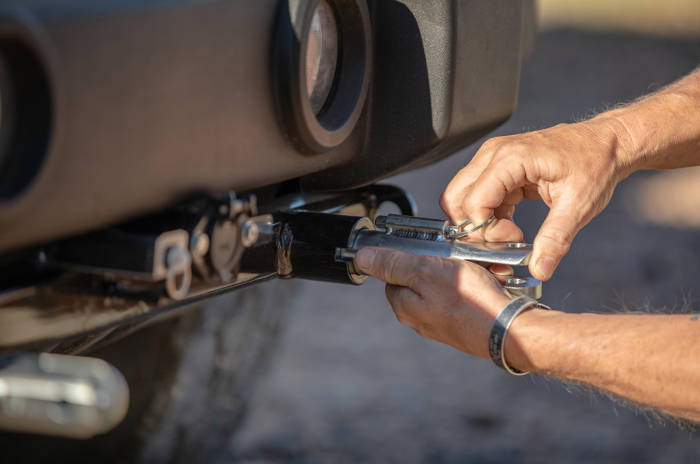

 ARIES
ARIES  CURT
CURT  LUVERNE
LUVERNE  UWS
UWS 



